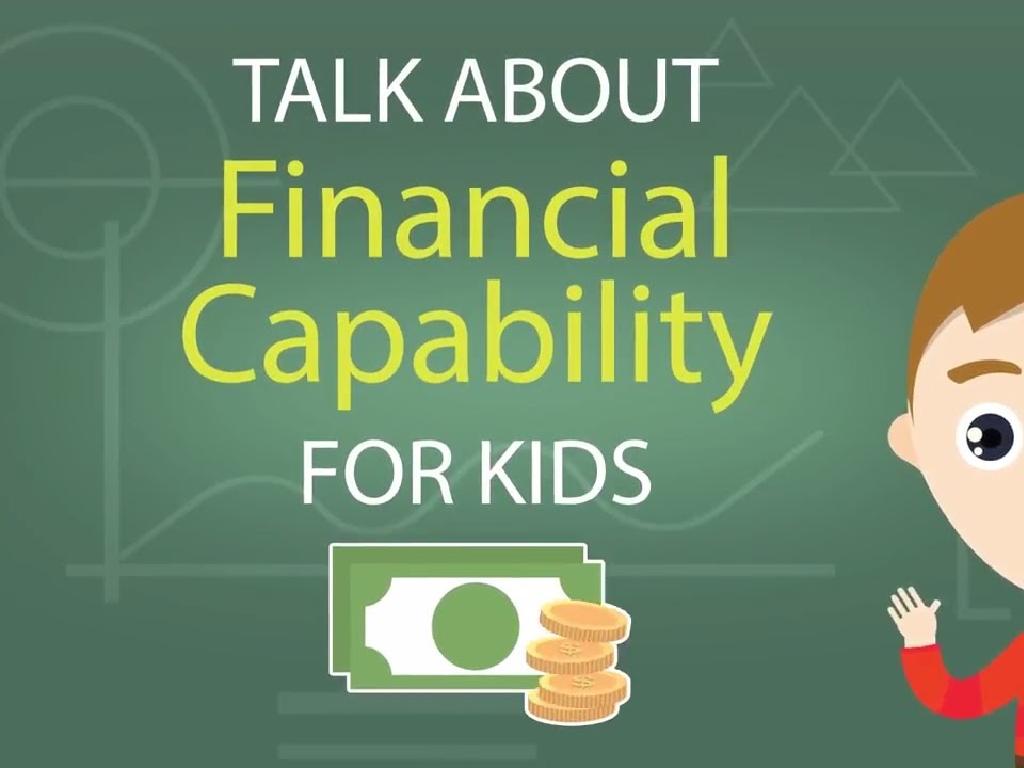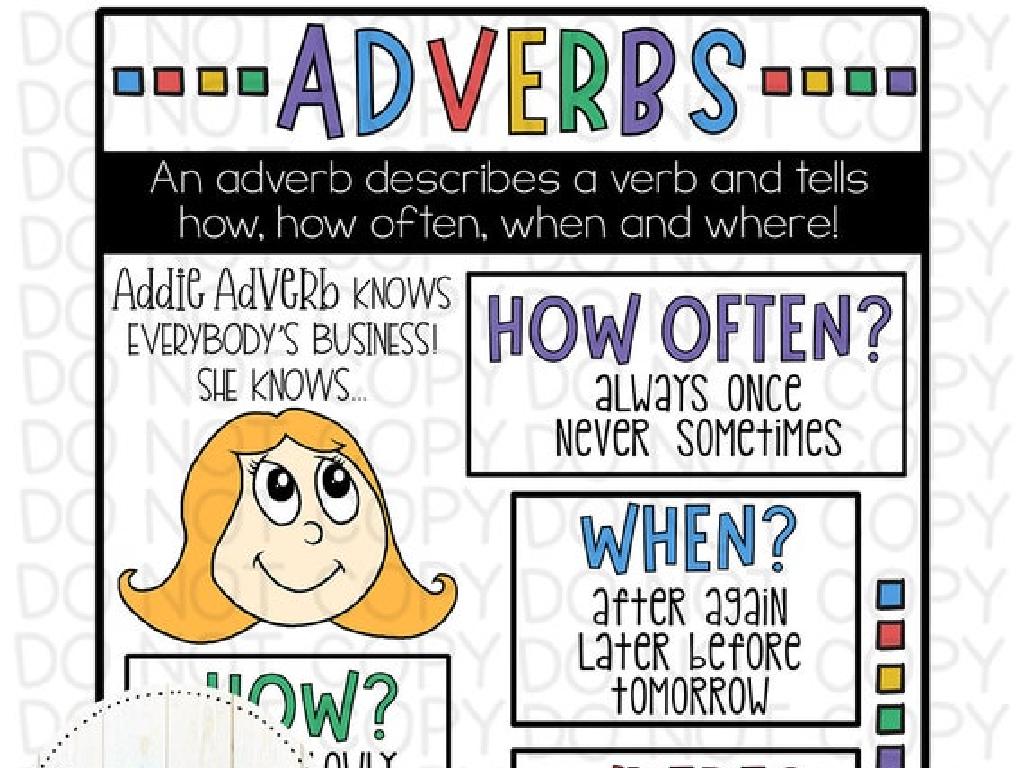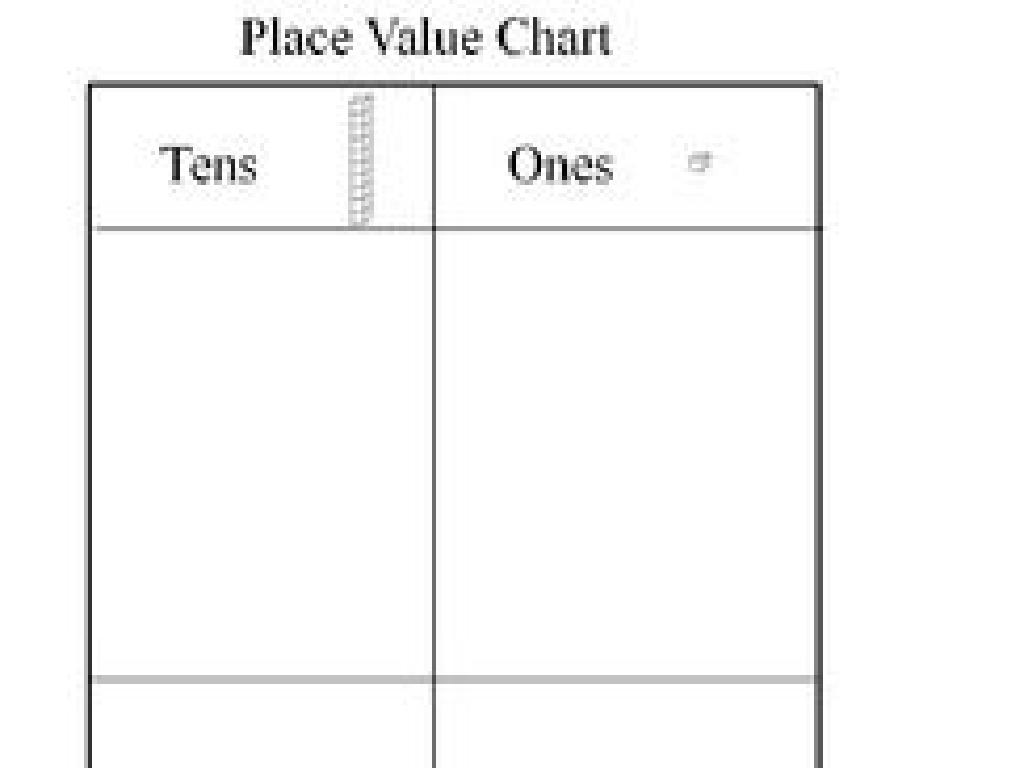Rectangles
Subject: Math
Grade: Kindergarten
Topic: Two-Dimensional Shapes
Please LOG IN to download the presentation. Access is available to registered users only.
View More Content
Welcome to Shapes: Meet the Rectangle
– Greet our little explorers
– Today’s shape: the rectangle
– A rectangle has four sides
– Discuss known shapes
– Rectangle characteristics
– It has two long sides, two short sides
|
Begin the class with a warm and enthusiastic greeting to engage the students. Introduce the rectangle as the special shape of the day. Encourage the children to participate by asking them to share shapes they are already familiar with, which could include circles, squares, and triangles. This will help them connect previous knowledge with the new concept. Explain that a rectangle is a shape with four sides, highlighting that it has two longer opposite sides and two shorter opposite sides. Use visual aids like pictures or physical objects to help them identify rectangles in the classroom and their environment. This interactive approach will make the learning process enjoyable and memorable for the students.
What is a Rectangle?
– A rectangle has four sides
– Like the pages of your book!
– Two sides are longer
– Like the top and bottom of a door
– Two sides are shorter
– Like the sides of a book
– Corners are square angles
– Each corner makes an L shape
|
This slide introduces kindergarteners to the basic properties of rectangles. Start by showing them a rectangle and pointing out each of the four sides. Explain that rectangles have two long sides and two short sides, which can be related to objects they are familiar with, like a book or a door. Highlight that all four corners of a rectangle are square angles by showing them the ‘L’ shape with your hands or with objects. Encourage the students to find rectangles in the classroom and at home to reinforce the concept.
Rectangles Around Us
– Find rectangles in the classroom
– The door is a rectangle
– Doors are rectangles with two longer sides and two shorter sides
– Your book is a rectangle
– Books are often shaped like rectangles too
– Rectangles have 4 sides
– Two sides are long and two sides are short
|
This slide is designed to help Kindergarten students recognize rectangles in their immediate environment. Encourage the students to look around the classroom and identify objects that have the shape of a rectangle. Point out the door as an example, highlighting its four sides with two longer opposite sides and two shorter opposite sides. Then, use a book as another example of a rectangle they are familiar with. Explain that rectangles are everywhere and they are a type of two-dimensional shape that we see and use every day. Ask the students to find more examples and share with the class to reinforce their understanding of rectangles.
Drawing a Rectangle
– Use a ruler to draw
– Draw two long lines
– Lines are opposite and equal
– Draw two short lines
– Lines are opposite and equal
– Lines meet at corners
– Make right angles at corners
|
This slide is designed to teach Kindergarten students the basics of drawing a rectangle. Start by showing them how to use a ruler to draw straight lines. Explain that a rectangle has two pairs of lines: one pair is longer, and the other pair is shorter. The lines in each pair should be the same length and opposite each other. When drawing, ensure that the lines connect to form right angles at each of the four corners. This activity can be done with the students using paper and rulers. Encourage them to practice drawing rectangles of different sizes to understand the shape better.
Rectangle Fun Facts
– A square is a special rectangle
– All sides are equal in a square
– ‘Rectangle’ means ‘right angle’
– Comes from Latin ‘rectangulus’
|
This slide introduces kindergarteners to interesting facts about rectangles. Emphasize that while all squares are rectangles, not all rectangles are squares. Highlight that the defining feature of a rectangle is having right angles. The term ‘rectangle’ itself is derived from Latin, indicating the importance of right angles in its definition. Use simple language and examples to explain these concepts, such as showing them a picture of a square and a rectangle and pointing out the equal sides of the square versus the two longer and two shorter sides of a rectangle. Encourage the children to look for rectangles and squares in the classroom or at home to connect the concept to real-life objects.
Class Activity: Rectangle Hunt
– Let’s search for rectangles
– Find rectangles in our classroom
– Look at doors, books, and windows
– You have 5 minutes to explore
– Use your detective skills to find them
– Ready, set, go!
|
This activity is designed to help students recognize rectangles in their everyday environment. Encourage the children to look at objects like doors, books, windows, and tables to find as many rectangles as possible. Remind them that rectangles have four sides with opposite sides being equal in length. Set a timer for 5 minutes and let the students explore the classroom. After the hunt, gather the students and discuss the objects they found. This will reinforce their understanding of rectangles and their properties. For students who finish early, challenge them to draw the rectangles they found or to count the number of long and short sides on various rectangles.
Rectangle Show and Tell
– Share rectangles you found
– Describe where you found it
– Explain why it’s a rectangle
– Look for 4 sides and 4 corners
– Listen to friends’ findings
|
This slide is for a class activity where students will engage in a ‘Show and Tell’ about rectangles they’ve found either at home, in the classroom, or outside. Encourage each student to speak about where they found their rectangle and to explain how they know it’s a rectangle, such as by counting the sides and corners. Provide guidance on how to respectfully listen to others while they share. Possible activities could include students bringing in rectangle-shaped objects, drawing rectangles they’ve seen, or cutting out rectangles from magazines. This activity will help students recognize rectangles in their environment and understand the properties of this shape.
Rectangle Craft Time
– Let’s create rectangle art!
– Cut out rectangles from colored paper
– Use scissors carefully to cut
– Glue rectangles to make a collage
– Think about how to arrange them
– Show your rectangle masterpiece
|
This slide introduces a hands-on activity where students will engage in creating art with rectangles, helping them to recognize and understand the shape. Provide safety scissors suitable for kindergarten students and assist them in cutting out rectangles from colored paper. Encourage them to explore their creativity by arranging and gluing the cutouts onto a larger paper to form a collage. Once completed, allow each student to present their artwork to the class, reinforcing their understanding of rectangles and boosting their confidence in their artistic abilities. Prepare to offer guidance and ensure that each student has enough materials to participate fully in the activity.
Celebrating Rectangles!
– Congrats on learning rectangles
– Recognizing and drawing rectangles
– Practice makes perfect with shapes
– Rectangles are all around us
– Look for door, books, and screens
– Keep finding rectangles every day
|
This slide is meant to wrap up the lesson on rectangles, reinforcing the students’ new ability to recognize and draw rectangles. It’s important to celebrate their achievement to build confidence. Encourage them to keep practicing by drawing rectangles and to look for rectangles in their daily environment, such as doors, books, and screens. This will help them connect the concept of rectangles to the real world, making the lesson more tangible and memorable. As they continue to spot rectangles, they’ll reinforce their understanding of two-dimensional shapes.





-a-solution-to-the-linear-equation/linear_equation_graph_solutions.png)
